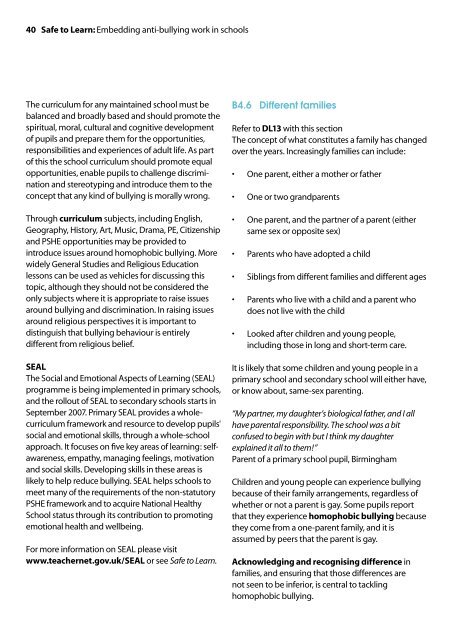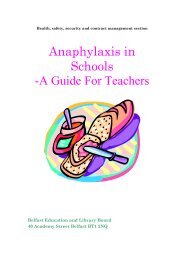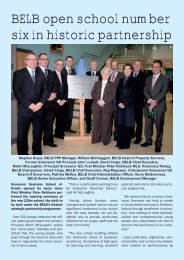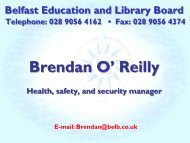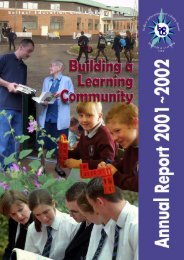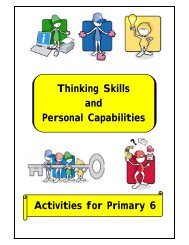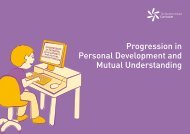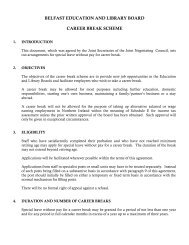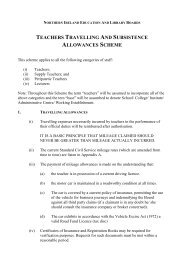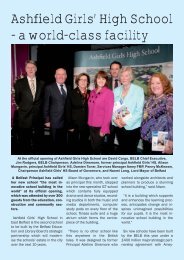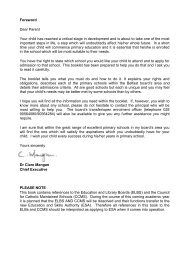Homophobic bullying - EACH
Homophobic bullying - EACH
Homophobic bullying - EACH
- No tags were found...
Create successful ePaper yourself
Turn your PDF publications into a flip-book with our unique Google optimized e-Paper software.
40 Safe to Learn: Embedding anti-<strong>bullying</strong> work in schoolsThe curriculum for any maintained school must bebalanced and broadly based and should promote thespiritual, moral, cultural and cognitive developmentof pupils and prepare them for the opportunities,responsibilities and experiences of adult life. As partof this the school curriculum should promote equalopportunities, enable pupils to challenge discriminationand stereotyping and introduce them to theconcept that any kind of <strong>bullying</strong> is morally wrong.Through curriculum subjects, including English,Geography, History, Art, Music, Drama, PE, Citizenshipand PSHE opportunities may be provided tointroduce issues around homophobic <strong>bullying</strong>. Morewidely General Studies and Religious Educationlessons can be used as vehicles for discussing thistopic, although they should not be considered theonly subjects where it is appropriate to raise issuesaround <strong>bullying</strong> and discrimination. In raising issuesaround religious perspectives it is important todistinguish that <strong>bullying</strong> behaviour is entirelydifferent from religious belief.SEALThe Social and Emotional Aspects of Learning (SEAL)programme is being implemented in primary schools,and the rollout of SEAL to secondary schools starts inSeptember 2007. Primary SEAL provides a wholecurriculumframework and resource to develop pupils'social and emotional skills, through a whole-schoolapproach. It focuses on five key areas of learning: selfawareness,empathy, managing feelings, motivationand social skills. Developing skills in these areas islikely to help reduce <strong>bullying</strong>. SEAL helps schools tomeet many of the requirements of the non-statutoryPSHE framework and to acquire National HealthySchool status through its contribution to promotingemotional health and wellbeing.For more information on SEAL please visitwww.teachernet.gov.uk/SEAL or see Safe to Learn.B4.6 Different familiesRefer to DL13 with this sectionThe concept of what constitutes a family has changedover the years. Increasingly families can include:• One parent, either a mother or father• One or two grandparents• One parent, and the partner of a parent (eithersame sex or opposite sex)• Parents who have adopted a child• Siblings from different families and different ages• Parents who live with a child and a parent whodoes not live with the child• Looked after children and young people,including those in long and short-term care.It is likely that some children and young people in aprimary school and secondary school will either have,or know about, same-sex parenting.“My partner, my daughter’s biological father, and I allhave parental responsibility. The school was a bitconfused to begin with but I think my daughterexplained it all to them!”Parent of a primary school pupil, BirminghamChildren and young people can experience <strong>bullying</strong>because of their family arrangements, regardless ofwhether or not a parent is gay. Some pupils reportthat they experience homophobic <strong>bullying</strong> becausethey come from a one-parent family, and it isassumed by peers that the parent is gay.Acknowledging and recognising difference infamilies, and ensuring that those differences arenot seen to be inferior, is central to tacklinghomophobic <strong>bullying</strong>.


